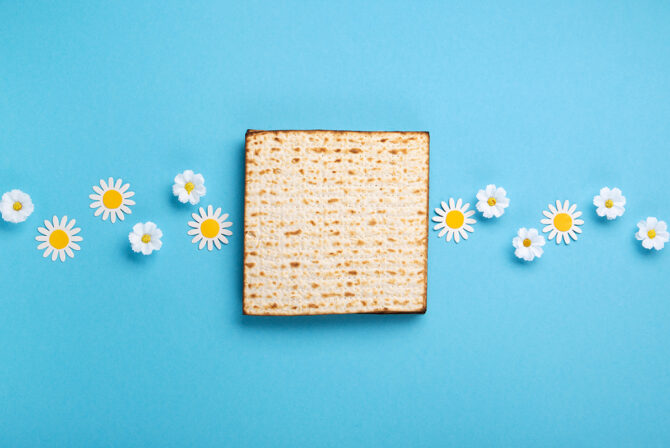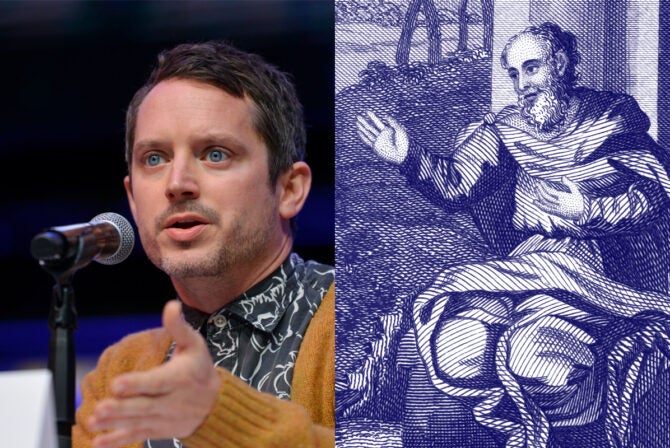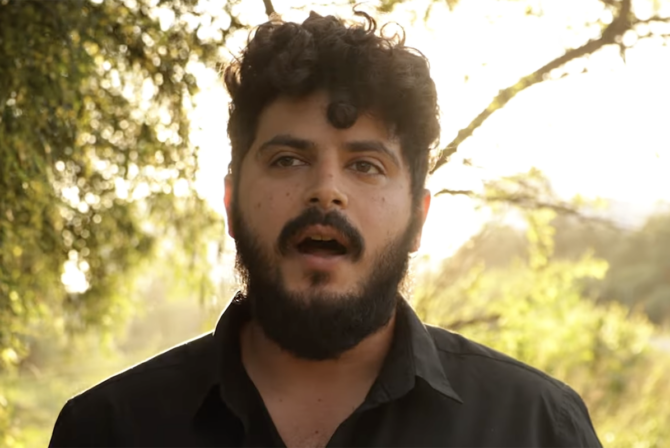Engrossed in a frantic internet search, my 10-year-old son stared intently at the screen of the computer in our kitchen. A few feet away from him, I soaked some matzahs in a bowl of water to soften them according to my mother’s Passover kugel recipe.
“What are you looking for?” I questioned, as I started to grate some apples by hand, fearful of the sparkling blades on my food processor.
“I need a sports haggadah,” he turned to me with disappointment. “I searched every website, and there’s nothing.”
I’ve been a Jewish educator for over two decades, so I assured my son that I had a few tricks up my sleeve. After rinsing and drying my hands, I started to examine the book lists from behemoth companies as well as websites of obscure and creative Jewish publishers. “Where are all the sports-themed haggadahs?” I asked myself out loud.
Every year at our family’s seder, we set the table and provided our guests with a communally used haggadah as well as their own special haggadah to peruse and share readings and illustrations during the ritual meal. There are as many haggadahs as there are recipes for haroset and chicken soup—ranging from feminist-themed ones to animated versions (with surprisingly cuddly versions of the plagues); chocolate haggadahs to high brow scholarly ruminations on the meaning of freedom; and haggadahs in hundreds of different languages. I still have my eye on an expensive but gorgeous haggadah filled with illuminated 15th century manuscripts that were given to a German monk.
“What I really need is a baseball haggadah,” my son informed me. “You should write one,” he suggested.
“Maybe I just will,” I responded.
If necessity is the mother of invention, my sons’ fidgeting during our seders coupled with their obsession with little league and the Mets sparked a desire to craft a baseball-themed seder ritual. After all, both baseball and Passover involve stories of wandering, of confronting challenges as we venture out from safety, and of finally coming home. On Passover, we celebrate God’s “mighty hand and outstretched arm.” Baseball also celebrates the ability of a good arm to take a team home. One of the purposes of the Passover seder is to capture the imagination of the participants and to encourage reflection on the meaning of freedom. Why not create a haggadah that would infuse creativity into this ancient and evolving ritual?
For seder that year, my sons flipped through their pile of papers decorated with internet photos of bat-like shank bones smacking matzah ball home runs over a baseball diamond shaped like a square of matzah. With Moses as the team captain for the Israelites and Pharaoh heading up the Taskmasters, the lineups struggled for dominance. God threw the ultimate “splitter,” making way for the Israelites to cross the Sea of Reeds. Each participant took a turn up at bat as a reader. There was a seventh inning stretch, during which the children scrambled to the front door to search for and welcome the presence of Elijah.
After Passover ended and I shook the last matzah crumbs out of our haggadahs, I composed query letters about my project and sent them to a few publishers. Editors ignored me or wrote back with gently phrased rejections, and I returned my sports project to an off-season location. The baseball haggadah was benched.
A few months later, I sat in a Chinese restaurant, eating egg drop soup with a friend who recently had endured the loss of both of her parents compounded by a diagnosis of and surgery for cancer. Her health restored, she asked me how teaching was going and how my love of writing was being nurtured. Sharing with her the very short story of my quirky baseball haggadah, she rested her spoon, stared at me, and reminded me about the fragility of life.
“Publish it yourself!” she demanded.
I came up with a million excuses (well, at least three). I can’t draw. Self-publishing might be expensive. Was there anyone in the world other than my sons intrigued by baseball-filtered interpretations of the four types of children and the 10 plagues, such as lice in the helmet and blackout of stadium lights? She countered each argument, reminding me that we had many friends with artistic talents and that any hobby would require some financial investment, even knitting. She was not a huge baseball fan, but she was sure that if stadiums could be filled with 40,000 fans, I might find a few hundred curious seder-goers who loved baseball.
This is what real friends do. They push you enough to follow your goals, even when they are unconventional. My book club buddy, a lawyer and city planner, told me about her life long study of painting and became my illustrator, creating vibrant oils that showed Moses carrying his bat and baseball bag across the Sea of Reeds and children playing catch among the pyramids.
We sat at my kitchen table cooking up ideas for visual puns, and we examined every word. Finding someone to help us marry the Hebrew text with the English interpretations and the artwork, we finally went to press in February of last year. The student rabbi at my synagogue wrote the foreword with his older brother, who just happened to be the general manager of the Texas Rangers. Lisa Teitelbaum, the illustrator, also created our website, and “The Baseball Haggadah” was born.
As Passover approaches, I’d like to toss the encouragement of my friend forward. This year at your seder, when you recite, “Next year in Jerusalem,” take a moment to think about what your metaphorical Jerusalem represents.
Every day is a new chance to make a first pitch.
Read More:
This ‘Yo B*tch’ Rule Is The Only Trick You Need to Teach Your Kids Manners
That Time My Son Told Me He Wants to Live with His Dad Instead of Me
14 Things You Probably Didn’t Know About ‘The Ten Commandments’







